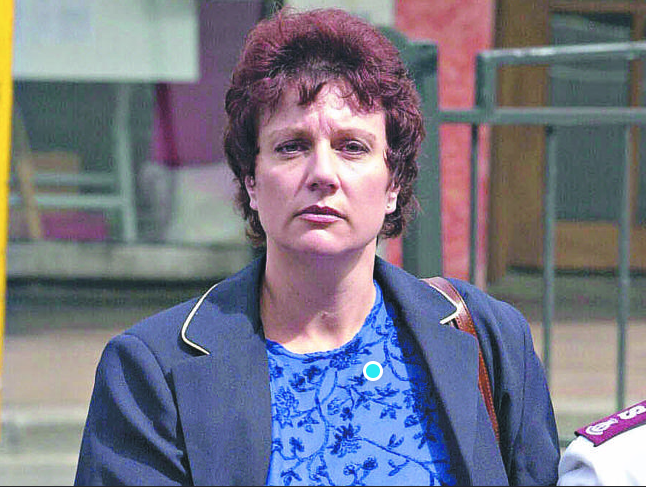Thanks to media pressure on the NSW Attorney General, a judicial review of the controversial case of Kathleen Folbigg begins today (three years after her petition was lodged) at Lidcombe coroner’s court. Folbigg is serving a 30-year prison sentence for killing all four of her infant children.
During her 2003 trial the court heard that Caleb, Patrick, Sarah and Laura were all killed by a mother who was driven to smother her children in fits of rage. The four children all died aged between 19 days and 19 months of age.
Having exhausted her rights of appeal, Ms Folbigg had her hopes pinned on the outcome of a petition seeking a judicial review of her case.

Kathleen Folbigg
Drafted by a Newcastle legal team, the petition argues, amongst other things, that some of the medical evidence against Ms Folbigg during the trial was flawed. It was submitted three years ago to the NSW Attorney General’s department, but it wasn’t until just nine days after an investigation into Ms Folbigg’s case was broadcast by the ABC’s Australian Story, (10 August, 2018) that Mark Speakman, the New South Wales Attorney-General, announced: “I have formed the view that an inquiry into Ms Folbigg’s convictions is necessary to ensure public confidence in the administration of justice. Today’s decision is not based on any assessment of Ms Folbigg’s guilt.
“The petition appears to raise a doubt or question concerning evidence as to the incidence of reported deaths of three or more infants in the same family attributed to unidentified natural causes in the proceedings leading to Ms Folbigg’s convictions. The direction establishing the inquiry requires Mr Blanch to have particular regard to this evidence in conducting the inquiry.” Mr Speakman added: “At the conclusion of the inquiry, Mr Blanch will prepare a report. “If of the opinion that there is a reasonable doubt as to the guilt of Ms Folbigg, Mr Blanch may refer the matter to the Court of Criminal Appeal for further consideration.”
The main concerns about the case:
- Three senior forensic pathologists who will give their opinions this week are expected to agree that the most likely cause of death for Folbigg’s fourth child, Laura, was myocarditis — an inflammation of the heart muscles
- A fourth expert who has written a report for the inquiry supports this view
- Caroline Blackwell, Conjoint Professor at the University of Newcastle School of Biomedical Sciences and Pharmacy, has submitted a statement saying the detective who led the investigation into the deaths of Folbigg’s children turned down the opportunity for tests to be conducted into whether infections had played a part in the deaths, because it was “too expensive”
- Folbigg’s third child Sarah may have died several hours earlier than first thought — casting doubt on the allegation that Folbigg smothered her
- Further expert opinion casts doubt on the allegation that Folbigg tried to smother her second child, Patrick, when he was four months old
- Folbigg has notified the inquiry that she will give evidence about the diary entries she made, when hearings resume in April
(The Charles Smith Blog, news.com.au, ABC, The Guardian)

One other thing that I would look into is this:
Was life insurance taken out on each baby by anyone? Did the foster family have any relatives in the insurance business –insiders, who could do this? What about the husband? It is possible that this woman was set up.
The foster relatives are “Bown” family. Do they have links to Brown insurance? This is one possibility, which could explain the deaths. The mother could have been set up.
No, no life insurance. No link to that insurance company.
The first baby has a disturbingly frightened look on his face a number of times. There are images of the other children, in which they have what look like unusually happy expressions. Possibly, they are so happy, because they are used to being mistreated.
I think that this evidence could be considered. The mother does seem cold toward the children, although she is being filmed.
If she is guilty, the horrific nature of the disclosure, made to her –with no regard for her feelings –regarding why she was adopted should surely be a mitigating fact. If this woman is ever released, I would hope that she is not left alone with children.
As I’ve said before, the courts want a community outcome, not necessarily a just outcome. Moral panic and outrage is not new to us ie: Lindy Chamberlain. The same situation regarding Kelli Lane is currently unfolding.
Part of the argument pointing to Folbigg’s guilt was the claim that the likelihood of losing four children in the manner that Folbigg’s children died would be a “trillion to one”.
In the similar Trupti Patel case in Britain, the odds of 73 million to one were cited. But the Royal Statistical Society said regarding that case, the stated figure of 73 million to one had “no statistical basis”.
How much less basis would there be for the much larger figures given in the Folbigg case?
(see When the Bough Breaks, by Matthew Benns for the Folbigg case and https://en.wikipedia.org/wiki/Trupti_Patel for a brief summary of the Patel case)
Nor was the jury informed that by then, there had been 8 similar cases around the world.
I understand that a similar local case was addressed on 60 minutes on Sunday. I recorded it but haven’t had the opportunity to watch it yet.
Tim
The problem with SIDS is it’s not a disease, infection or medical condition. It’s simply an unknown cause of death. I wouldn’t mind betting at some time in the future we’ll find out there is some inheritable condition that can cause cot death in numerous children born to the same parents. We have seen this replicated with Downs Syndrome and Autism for example. And dare I say it: it could well be a predisposition to something in vaccines.